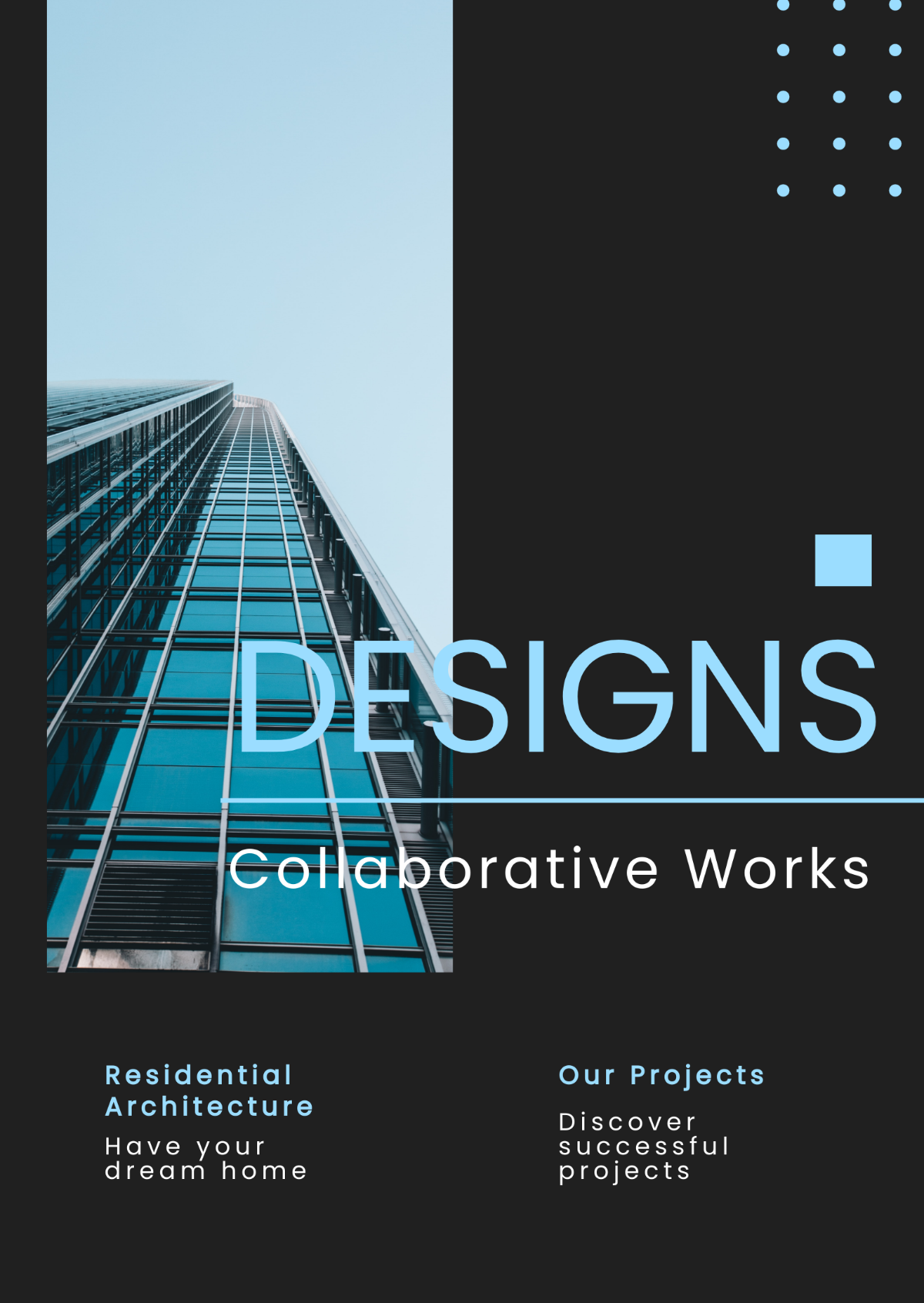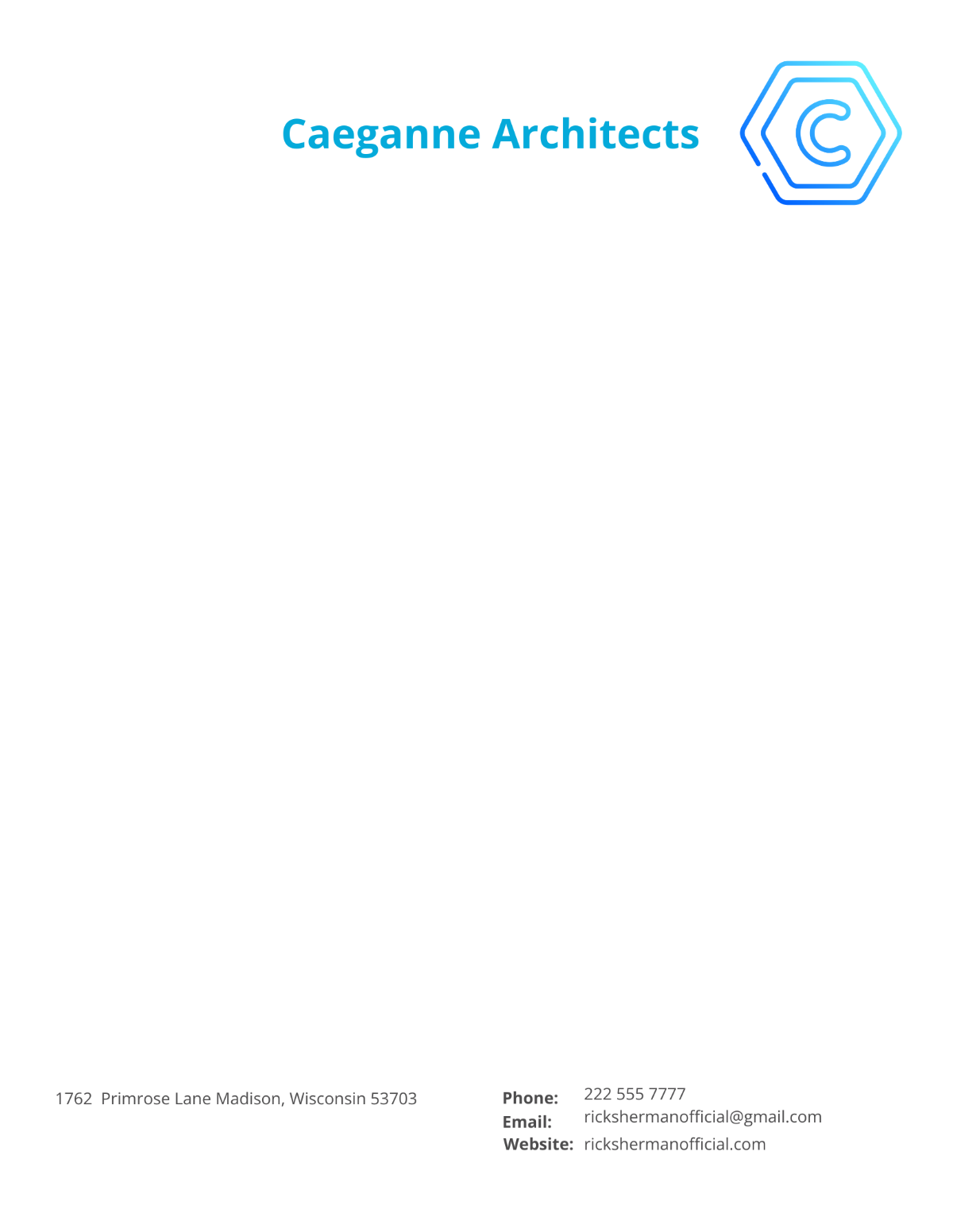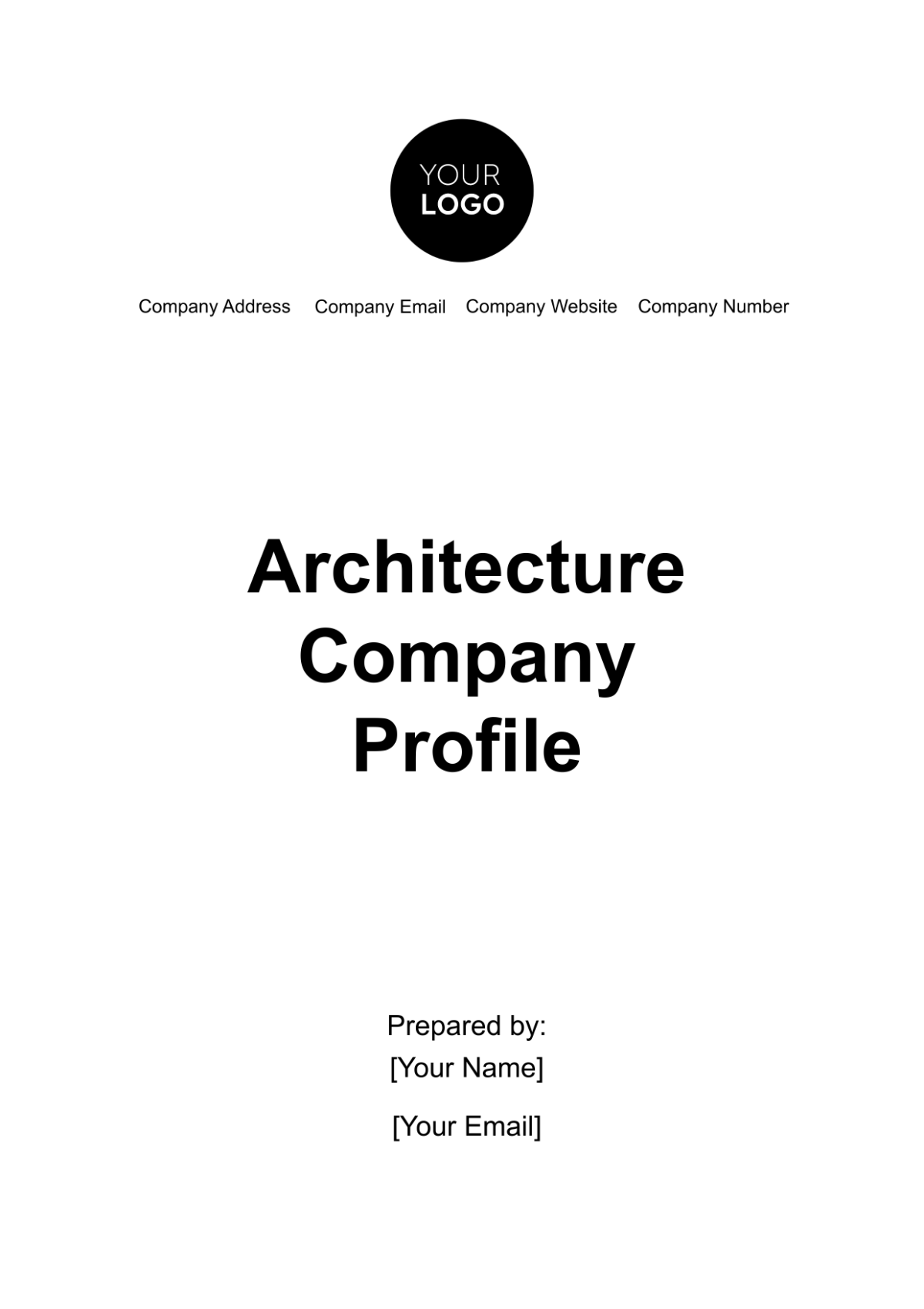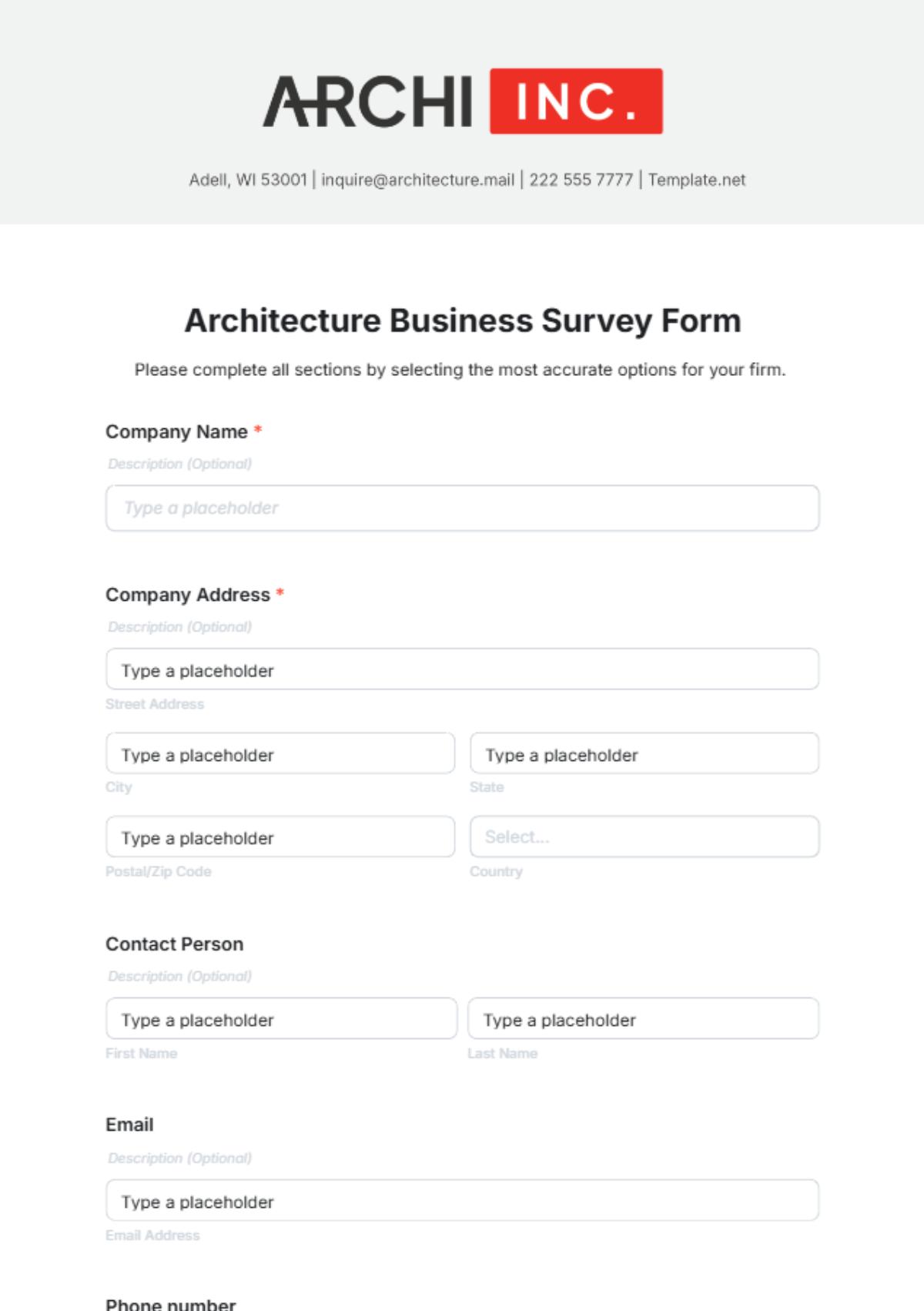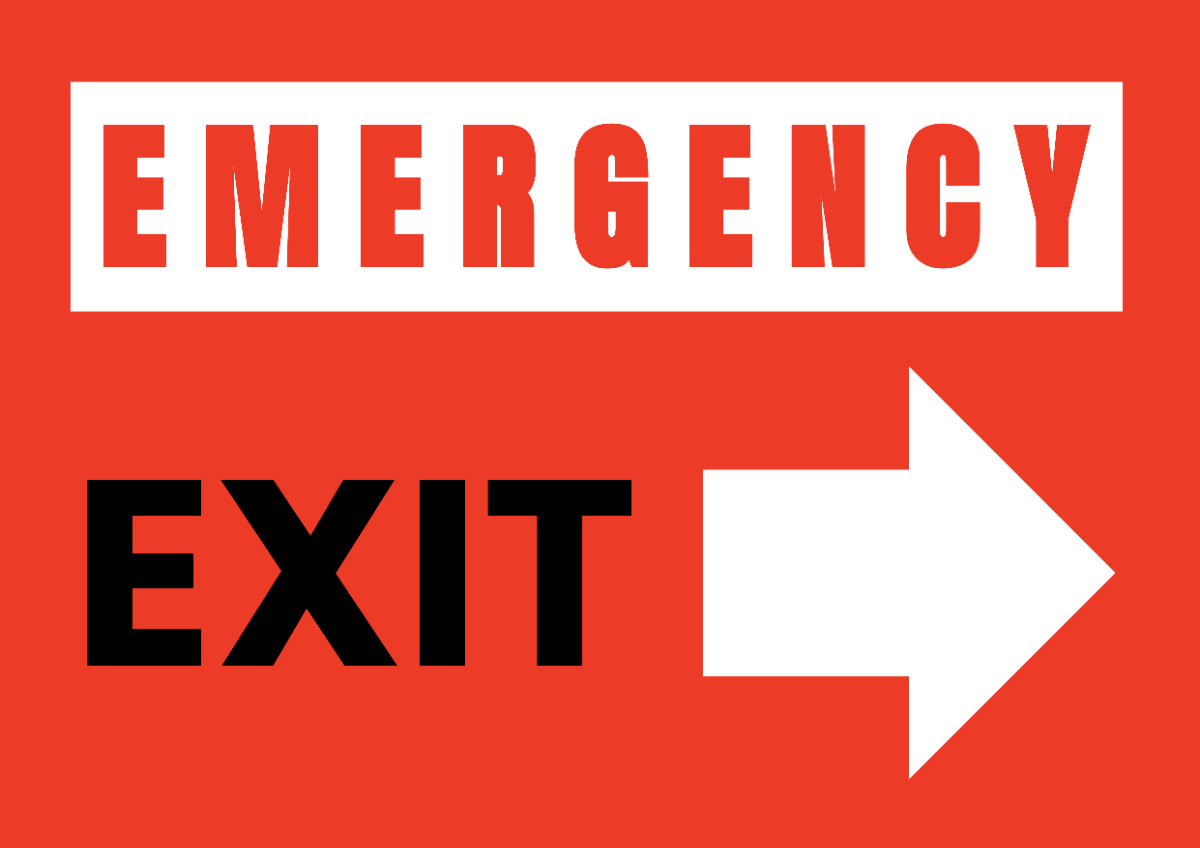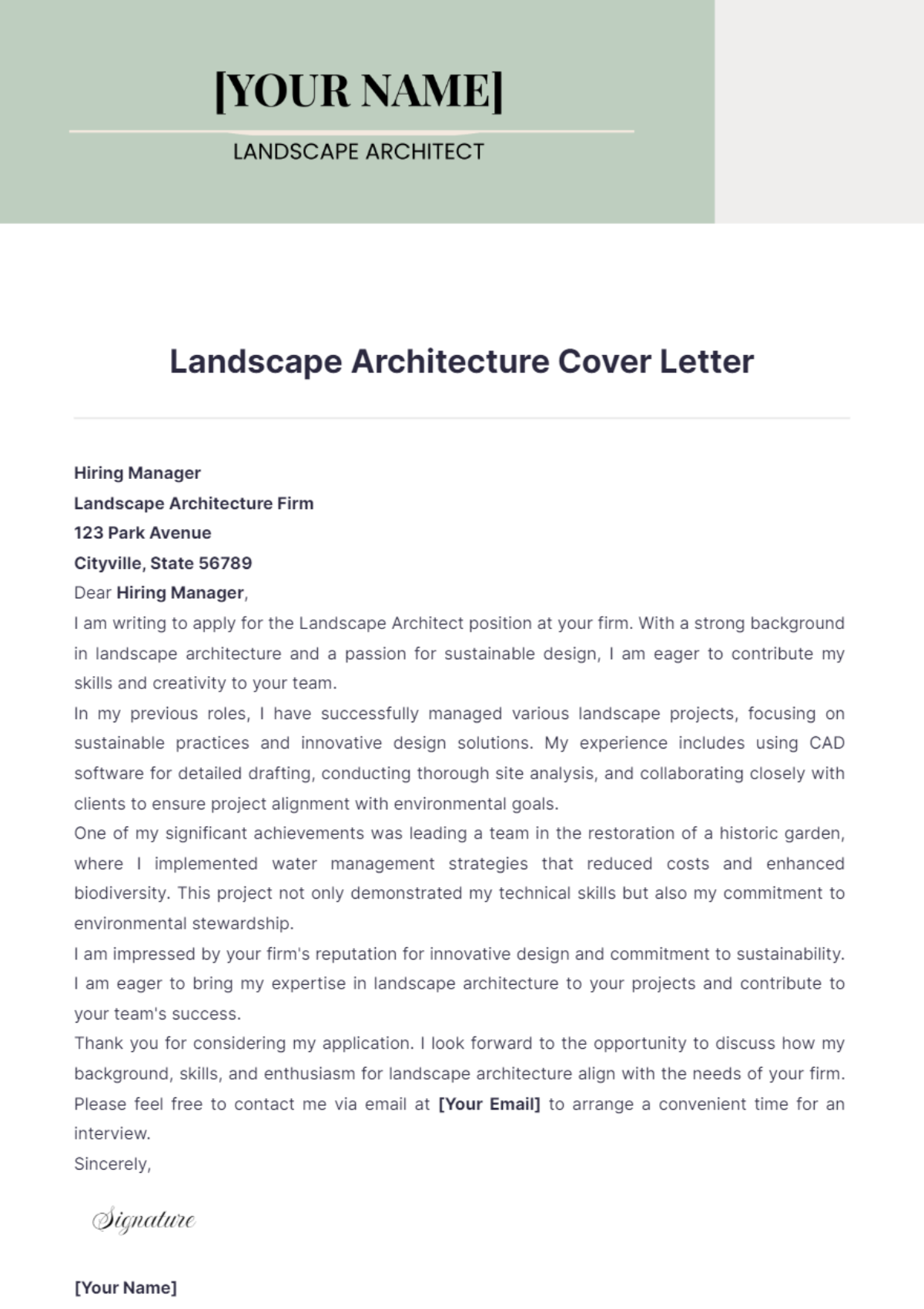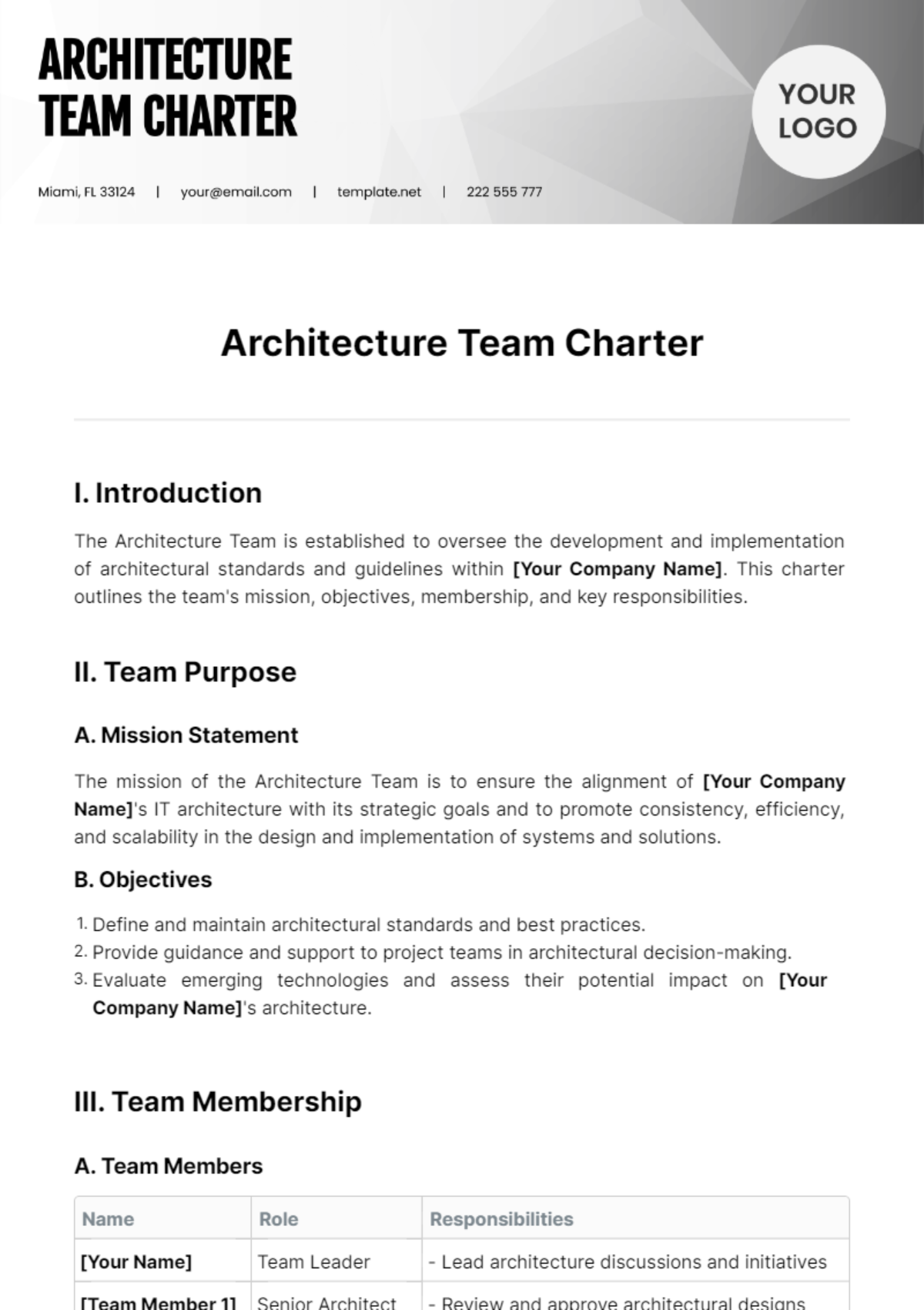I. Executive Summary
A. Overview
This Architecture Financial Strategy outlines the comprehensive financial planning and management approach for [Your Company Name], aimed at ensuring the company's financial health and long-term sustainability. The strategy encompasses detailed budgeting, cost management, investment planning, and risk management techniques tailored to the unique needs of our organization. By implementing this strategy, [Your Company Name] will be able to align its financial practices with overarching business objectives, paving the way for continuous growth and profitability.
B. Objectives
Maximize Profitability: Enhance revenue streams while minimizing costs through strategic initiatives and operational efficiencies. This objective focuses on identifying and exploiting high-margin opportunities and streamlining processes to eliminate waste.
Ensure Financial Stability: Maintain healthy cash flow and reserves to safeguard against market volatility and unforeseen expenses. This involves meticulous planning, consistent monitoring, and proactive management of financial resources.
Support Strategic Growth: Allocate resources to high-potential projects and initiatives that align with the company’s long-term vision. This includes investing in innovative technologies, expanding market presence, and fostering partnerships that drive growth.
C. Key Financial Metrics
Revenue Growth: Target annual growth of [10%], reflecting a robust strategy to increase sales and market share.
Net Profit Margin: Maintain a net profit margin of [15%] to ensure that the company remains profitable after all expenses are accounted for.
Return on Investment (ROI): Achieve an ROI of [20%], indicating efficient utilization of capital in generating profits.
II. Financial Planning
A. Budgeting
Annual Budget: Develop an annual budget that forecasts revenues, expenses, and cash flows. This budget serves as a financial roadmap for the year, guiding spending decisions and helping to align financial resources with strategic priorities.
Revenue Forecasting: Estimate sales based on market trends, historical data, and predictive analytics to create a realistic revenue outlook.
Expense Planning: Itemize fixed and variable costs, including operational and capital expenditures, to manage spending effectively.
Cash Flow Projections: Ensure sufficient liquidity to cover operational needs and investment opportunities by forecasting cash inflows and outflows.
B. Cost Management
Cost Reduction Strategies: Implement initiatives to reduce overhead costs without compromising quality. This includes adopting cost-saving technologies and renegotiating supplier contracts.
Operational Efficiency: Streamline processes to reduce waste and improve productivity, leveraging lean management principles and automation.
Vendor Negotiations: Secure favorable terms with suppliers to lower procurement costs, focusing on long-term partnerships that offer mutual benefits.
Cost Allocation: Accurately assign costs to departments and projects to better understand profitability and improve financial decision-making.
C. Investment Planning
Capital Investments: Identify and evaluate potential investments in technology, infrastructure, and other assets to support growth.
ROI Analysis: Calculate expected returns on proposed investments to prioritize those that offer the highest benefits.
Risk Assessment: Assess potential risks associated with investments and develop strategies to mitigate them, ensuring informed decision-making.
Research and Development (R&D): Allocate funds to R&D to foster innovation and maintain a competitive edge. This includes developing new products, enhancing existing offerings, and exploring emerging technologies.
III. Financial Management
A. Revenue Management
Sales Strategy: Develop and implement strategies to drive sales growth, focusing on market expansion, customer acquisition, and retention.
Market Expansion: Enter new markets and expand product offerings to diversify revenue streams and mitigate risk.
Pricing Strategy: Optimize pricing to balance competitiveness and profitability, using data-driven insights to set prices that attract customers while maximizing margins.
Revenue Streams: Diversify revenue streams to reduce dependency on a single source and enhance financial resilience.
Subscription Services: Introduce subscription-based models to ensure recurring revenue, providing a stable income stream.
Partnerships: Form strategic partnerships to enhance revenue opportunities, leveraging synergies with complementary businesses.
B. Expense Control
Monitoring and Reporting: Regularly review and report on financial performance against budget to identify deviations and take corrective actions.
Variance Analysis: Identify and explain variances between actual and budgeted figures, using insights to improve future planning.
Cost Centers: Establish cost centers for better tracking and management of expenses, ensuring accountability and transparency.
Operational Audits: Conduct periodic audits to identify inefficiencies and areas for improvement, fostering a culture of continuous improvement.
C. Financial Risk Management
Risk Identification: Identify financial risks, including market volatility, credit risk, and operational risks, to proactively manage potential threats.
Mitigation Strategies: Develop and implement strategies to mitigate identified risks, ensuring the company is prepared for adverse scenarios.
Insurance: Secure appropriate insurance coverage to protect against significant losses, providing a safety net for unforeseen events.
Hedging: Use financial instruments to hedge against currency and interest rate fluctuations, stabilizing financial performance.
IV. Funding and Capital Structure
A. Capital Raising
Equity Financing: Raise capital through the issuance of shares to fund growth initiatives and strengthen the balance sheet.
Investor Relations: Maintain strong relationships with existing and potential investors, providing regular updates and transparency.
Valuation: Conduct regular valuations to ensure accurate pricing of shares, reflecting the true value of the company.
Debt Financing: Secure loans or other forms of debt to finance growth, balancing the need for capital with the cost of borrowing.
Interest Rates: Negotiate favorable interest rates to minimize borrowing costs and enhance profitability.
Debt-to-Equity Ratio: Maintain an optimal debt-to-equity ratio to balance leverage and equity, ensuring financial stability.
B. Capital Allocation
Resource Allocation: Allocate financial resources to projects and departments based on strategic priorities, ensuring optimal use of capital.
Project Prioritization: Prioritize projects with the highest potential ROI, focusing on those that align with the company’s long-term goals.
Budget Adjustments: Adjust budgets as necessary to reflect changing priorities and market conditions, maintaining flexibility in financial planning.
C. Dividend Policy
Dividend Distribution: Establish a clear dividend policy that balances reinvestment in the business with shareholder returns, fostering investor confidence.
Payout Ratio: Determine an appropriate payout ratio based on profitability and cash flow, ensuring sustainable distributions.
Reinvestment: Allocate retained earnings to fund growth initiatives and strengthen the balance sheet, supporting long-term success.
V. Financial Reporting and Compliance
A. Financial Reporting
Financial Statements: Prepare accurate and timely financial statements, including income statements, balance sheets, and cash flow statements, to provide a clear picture of the company's financial health.
Transparency: Ensure transparency in financial reporting to maintain stakeholder trust and comply with regulatory requirements.
Disclosure: Fully disclose financial performance and material events to stakeholders, fostering an environment of openness and accountability.
Accuracy: Implement rigorous controls to ensure the accuracy of financial data, reducing the risk of errors and misstatements.
B. Regulatory Compliance
Regulatory Requirements: Stay abreast of and comply with all relevant financial regulations, minimizing the risk of legal issues and penalties.
Internal Controls: Develop and maintain strong internal controls to ensure compliance, safeguarding the company’s assets and reputation.
Audits: Conduct regular internal and external audits to verify compliance and identify areas for improvement, ensuring adherence to best practices.
C. Governance
Board Oversight: Ensure effective oversight by the board of directors over financial matters, providing strategic guidance and accountability.
Audit Committee: Establish an audit committee to oversee financial reporting and compliance, enhancing governance and transparency.
Ethical Standards: Promote a culture of ethics and integrity in financial practices, ensuring that all employees adhere to high ethical standards.
VI. Performance Evaluation
A. Key Performance Indicators (KPIs)
Financial KPIs: Track key financial metrics to evaluate performance and identify areas for improvement.
Gross Profit Margin: Aim for a gross profit margin of [40%], reflecting efficient management of production costs.
Operating Margin: Maintain an operating margin of [20%], indicating the company’s ability to manage operating expenses effectively.
Current Ratio: Ensure a current ratio of [2:1] to indicate good short-term financial health, providing a buffer against liquidity risks.
B. Benchmarking
Industry Benchmarks: Compare financial performance against industry benchmarks to identify areas for improvement and best practices.
Competitor Analysis: Analyze competitors' financials to identify strengths and weaknesses, using insights to enhance competitive positioning.
Market Trends: Monitor market trends to anticipate changes and adapt strategies accordingly, ensuring the company remains agile and responsive.
C. Continuous Improvement
Feedback Mechanisms: Implement feedback mechanisms to gather input from stakeholders and identify areas for improvement, fostering a culture of continuous improvement.
Stakeholder Surveys: Conduct surveys to gauge stakeholder satisfaction and identify concerns, using feedback to drive enhancements.
Performance Reviews: Regularly review financial performance and make adjustments as necessary, ensuring the company remains on track to achieve its goals.
VII. Conclusion
This comprehensive Architecture Financial Strategy serves as a blueprint for [Your Company Name] to achieve financial excellence. By adhering to the outlined strategies and continuously monitoring performance, [Your Company Name] can ensure sustained growth, stability, and profitability in the [Tech Industry]. The strategy emphasizes rigorous planning, proactive management, and continuous improvement, positioning the company to navigate financial challenges and capitalize on opportunities in a dynamic market environment.
VIII. Appendices
A. Financial Statements
Sample Income Statement: Provides a detailed breakdown of revenues, costs, and expenses, highlighting profitability over a specific period.
Sample Balance Sheet: Shows the company’s assets, liabilities, and equity at a specific point in time, providing a snapshot of financial health.
Sample Cash Flow Statement: Details cash inflows and outflows from operating, investing, and financing activities, illustrating liquidity and cash management.
B. Glossary of Terms
Revenue: Income generated from normal business operations, such as sales of goods and services.
Net Profit Margin: Percentage of revenue remaining after all expenses, taxes, and costs have been deducted, indicating overall profitability.
Return on Investment (ROI): Measure of the profitability of an investment relative to its cost, used to evaluate the efficiency of investment decisions.
C. References
Financial Reporting Standards: Refer to the latest guidelines and standards, such as those issued by the Financial Accounting Standards Board (FASB) or International Financial Reporting Standards (IFRS).
Regulatory Bodies: List of relevant regulatory bodies and their requirements, including the Securities and Exchange Commission (SEC) and other industry-specific regulators.
Tables and Charts
Table 1: Annual Budget Overview
Category | Amount [$] |
|---|---|
Revenue | [0,000,000] |
Fixed Costs | [0,000,000] |
Variable Costs | [0,000,000] |
Capital Expenditures | [0,000,000] |
Net Profit | [0,000,000] |
Table 2: KPI Benchmarks
KPI | Target | Current |
|---|---|---|
Revenue Growth | 10% | [0%] |
Net Profit Margin | 15% | [0%] |
ROI | 20% | [0%] |
Gross Profit Margin | 40% | [0%] |
Operating Margin | 20% | [0%] |
Current Ratio | 2:1 | [0:0] |








